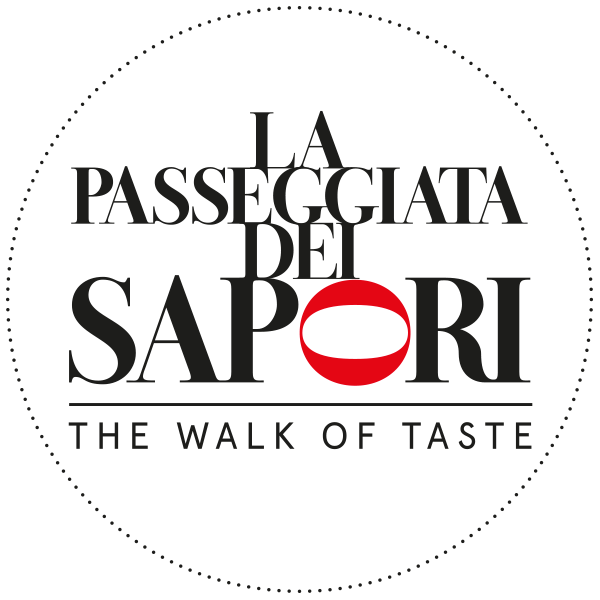The salt trade and its role in the development of Parma’s cured meat production
In the Middle Ages, the salt trade was already subject to a municipal tax. As one can read in Salimbene de Adam’s Chronicle, in 1277 the city began construction of the Salt Customs House[1], located on the corner of what is now borgo San Vitale, where the ancient name of borgo della Salina is still displayed. The Town Hall Tower adjoined the city’s storehouses, and it is thought that salt humidity was one of the main causes for the tower subsiding and collapsing in 1609. Afterwards the palace was rebuilt in its present form.
Unlike other territories, Parma was able to get its supply of salt through the brine wells in the Salsomaggiore area, many of which were owned by the city, which in the 1830s was producing 1,230 tonnes of salt a year.[2]
These waters, trapped underground when the sea that filled the Po Plain drew back, were already known to the Celts and the Romans, who extracted salt from them.[3] Before the invention of refrigeration, salt was the primary means of preservation, and was used to salt cheese, butter, fish and meats. Indeed, it is easy to identify the origin of the word “salume” (cured meat) and to see how the presence of salt deposits in Salsomaggiore was crucial to the development of the food economy in the Parma area.
The salt from this area was preferred to sea salt because of its high content of iodine, bromine, and sulphur, which could – especially iodine and bromine – block the growth of bacteria and, therefore, facilitate the preservation of meats. The use of this particular type of salt undoubtedly helped the work of the first pork butchers who, noticing the good results they obtained when they did so, must have been tempted to slowly decrease the amounts of salt, thus unwittingly “inventing” Parma ham, the mild one.[4]
Salt was thus seen as an indispensable element for life, so precious that is was used as currency (hence the Roman word “salary”). This is why there is quite a “lively” history around the effort to control the Salsomaggiore areas. The Celetati, a Gaul tribe, were the first to settle here and remained until their submission to the Roman colonists, who founded a settlement on Mount Castellazzo to defend the salt wells. Salt extraction only ceased in 589 when the mines were destroyed by landslides and earthquakes. They were restored in 789 and Charlemagne, taking into account the value of salt, in 801 granted special exemptions and privileges to those working the salt wells to extract the precious mineral. He then donated the Salsomaggiore wells to the Church of Borgo San Donnino (today Fidenza); they later passed on the Bishop or Parma and the Bishop of Piacenza.[5]
Because of the immense strategic importance of salt mining activities, which made the Parma area independent of coastal salt marshes, several castles were built in the Middle Ages to defend the Salsomaggiore wells, such as the Scipione one, also called the “salt castle.”
The Marquises of Pallavicino played an essential role in the history of the Salsomaggiore salt wells: they were among the largest salt producers and controlled its trade over a very vast area, deriving from it great part of their wealth. In 1279 the towns of Parma and Piacenza forced the Marquises of Scipione to provide a certain amount of salt monthly at below market price, in exchange for which the Pallavicino family and their men were granted exemption from all real and personal taxes. Similar agreements were made with the Viscontis, and later with the Sforza family. Documents from the 18th century prove that, even after centuries, the last descendants of Manfredo Pallavicino continued to enjoy these privileges.
A long legal dispute between the commune of Parma and the Pallavicino family over the ownership of a number of wells located between Scipione, Salsomaggiore, Salsominore and Tabiano ended in 1318 in favour of Parma.
With the establishment of the Duchy of Parma and Piacenza in 1545, ruled by the powerful Farnese family, the area and its precious salt mines became the property of the Ducal Treasury.
In the 17th century the Farnese family introduced new systems for extracting underground waters, with plants that can still be seen in Salsomaggiore.
The property latter passed to the Bourbons, when they succeeded to the Dukedom, and then to Maria Louise, from 1816 to 1847. After another, short period under the Bourbons, the Duchy became part of the Kingdom of Italy and in 1860 the brine waters began flowing into the Public Domain, which has managed them to these days.[6]
[1] SALIMBENE DE ADAM, La Cronaca, translated by G. Tonna, Milan, Garzanti, 1968, pp. 359-360.
[2] MOLOSSI L., Vocabolario topografico dei ducati di Parma, Piacenza e Guastalla, Parma, Tipografia Ducale, 1832-34, pp. 471-474.
[3] Slimy mud (the “moja”) was extracted with buckets from the wells and then purified by boiling it in large iron pots over firewood. This evaporation method was used for centuries for the extraction of salt.
[4] DALL’OLIO E., Il Prosciutto di Parma, Parma, Agenzia 78, 1989, pp. 24-28.
[5] Vivere il Medioevo. Parma al tempo della Cattedrale, Milan, Silvana Editoriale, 2006, pp. 276-277.
[6] FORNASARI M., Le acque “salse” e l’industria dei salumi, in www.museidelcibo.it
